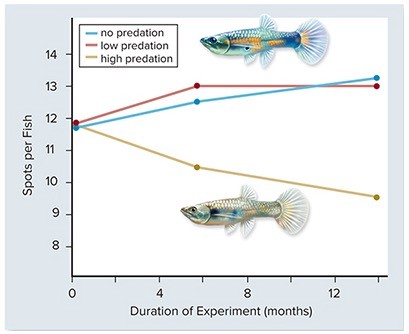 In the experiment above, guppy color patterns (spots) were measured in populations exposed to increasing amounts of predation. From this you could conclude that ________.
In the experiment above, guppy color patterns (spots) were measured in populations exposed to increasing amounts of predation. From this you could conclude that ________.
A. predators are less likely to catch and eat brightly colored guppies
B. predators do not affect the color patterns of guppies
C. predators are more likely to catch and eat brightly colored guppies
D. evolutionary changes take millions of years to appear
E. brightly colored guppies are more likely to reproduce in the presence of predators
Answer: C
You might also like to view...
Which of the following is NOT a reaction pathway involved in the catabolism of arginine to generate ATP?
A. Citrulline + Pi ? ornithine + carbamyl-P B. Carbamyl-P + ADP ? ATP + CO2 + NH3 C. Arginine + 3 H2O ? CO2 + 4 ATP D. Arginine + H2O ? citrulline + NH3
In animals with a brain, the two major divisions of the nervous system are the ____
a. autonomic and peripheral nervous systems b. central and peripheral nervous systems c. brain and spinal cord d. nerves from the brain and the peripheral nervous system e. cranial and spinal nerves
The skin is part of which system?
a. integumentary b. muscular c. skeletal d. endocrine e. respiratory
At the milestone that defines telophase, the chromosomes
a. separate. b. come together. c. are at opposite poles. d. line up. e. cross over.